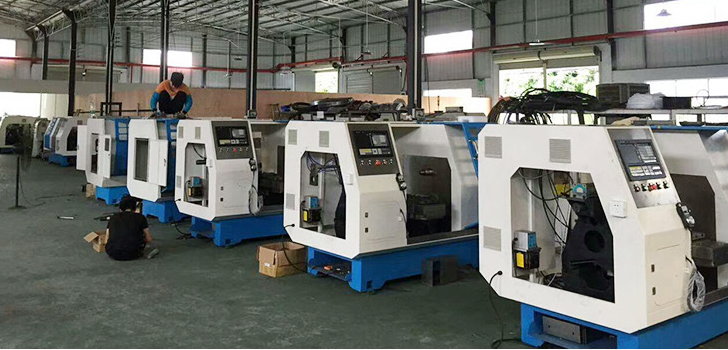
NOTE:If you interested in us ,Please follow us.
The slab and the core mold rotate together, and the roller is fed and pressure is applied to make the slab close to the core mold to form a point-by-point local deformation stamping process. Spinning can manufacture a variety of axisymmetric rotating body parts, such as speakers, bullets, high pressure container heads, copper cymbals; can also be used for cylinder closing, blank forming, etc. The characteristics of spinning are: a large workpiece can be formed with a small deformation force; the equipment is relatively simple, and the small and medium-sized thin plate parts can be spun by a common lathe; the mold is simple, only one core mold is required, and the material requirement is low. Spinning is suitable for small batch production, because it can only process rotating parts, which has greater limitations and low productivity. Spinning can be performed by special machinery, using profile spinning and digital control spinning. The process of thinning the plate thickness while spinning forming is called thinning spinning, also called strong spinning, which is mostly used for processing cones, thin-walled tubular parts, etc., and can also be used to spin large diameter deep. The tube is cut into a flat plate.
The spinning is to fix the flat plate or the hollow blank on the mold of the numerical control metal forming equipment, and press the blank with the rotating wheel or the rod to make local plastic deformation while rotating the spindle of the random bed. Under the joint action of the feeding motion of the rotating wheel and the rotating motion of the blank, the local plastic deformation is gradually extended to the entire surface of the blank, and is closely attached to the mold to complete the spinning process of the part.

The advantage of spinning is that the equipment and the mold are relatively simple (can be replaced by a lathe without a dedicated CNC metal forming equipment), in addition to forming a rotating body such as a cylindrical shape, a cone shape, a paraboloid formation or other various curves. It can process rotating body parts of quite complex shapes. The disadvantage is low productivity and high labor intensity, which is more suitable for trial production and small batch production.
With the production needs of aircraft, rockets and missiles, on the basis of ordinary spinning, thinning and spinning (also called strong spinning) has been developed.
The causes of mold deformation of CNC metal forming equipment are often complicated, but as long as we master the deformation law and analyze the causes, the different methods can be used to prevent the deformation of the CNC metal forming equipment mold, which can be reduced and controlled. In general, the heat treatment deformation of precision and complex CNC metal forming equipment can be prevented by the following methods.
1) Reasonable material selection. For precision and complex molds, the micro-deformed die steel (such as air-quenched steel) with good material should be selected. The die steel with serious carbide segregation should be reasonably forged and heat-treated, and the solid steel can be solidified for larger and unforgeable die steel. Refine heat treatment.
2) The design of the mold structure of CNC metal forming equipment should be reasonable, the thickness should not be too disparate, the shape should be symmetrical, and the deformation of the CNC metal forming equipment mold should master the deformation law and reserve the machining allowance. For large and sophisticated molds, the combination can be used. structure.
3) Precise heat treatment of complex and complex molds to eliminate residual stress generated during machining.
4) Reasonably select the heating temperature and control the heating speed. For sophisticated molds, slow heating, preheating and other balanced heating methods can be used to reduce the heat treatment deformation of the mold.
5) Under the premise of ensuring the hardness of the CNC metal forming equipment, pre-cooling, grading cooling quenching or warm quenching process should be used.
6) For precision and complex molds, vacuum quenching and cryogenic treatment after quenching should be used as far as possible.
7) For some sophisticated molds, pre-heat treatment, aging heat treatment, quenching and nitriding heat treatment can be used to control the precision of the CNC metal forming equipment mold.
8) When repairing defects such as sand holes, pores, and abrasion of the mold, use a cold-welding machine and other small heat-affecting repair equipment to avoid deformation during the repair process.
E-mail: info@cnhxsk.com
WeChat:+86 18022093702
WhatsApp: +86 18813969923
(WhatsApp can not use in China, Please contact us in WeChat)
